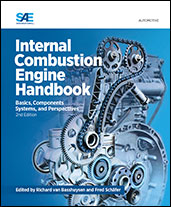Technical Paper
Investigation of Flame Propagation Description in Quasi-Dimensional Spark Ignition Engine Modeling
2018-09-10
2018-01-1655
The engine development process has been enhanced significantly by virtual engineering methods during the last decades. In terms of in-cylinder flow field, charge flow and combustion modelling, 3D-CFD (three dimensional) simulations enable detailed analysis and extended investigations in order to gain additional knowledge about design parameters. However, the computational time of the 3D-CFD is an obvious drawback that prevents a reasonable application for extensive analysis with varying speed, load and transient conditions. State-of-the-art 0D (zero dimensional) approaches close the gap between the demand of high computational efficiency and a satisfying accordance with experimental data. Recent improvements of phenomenological combustion approaches for gasoline spark ignition engines deal with the consideration of detailed flow parameters, the accuracy of the laminar flame speed calculation and the prediction of the knock limit.

